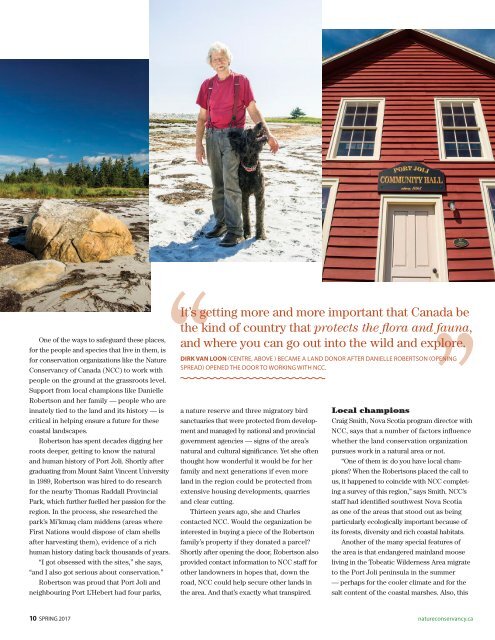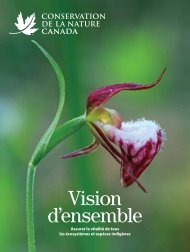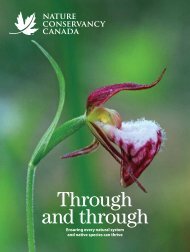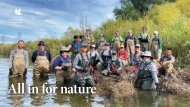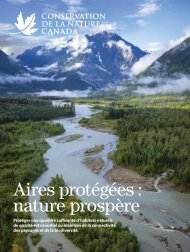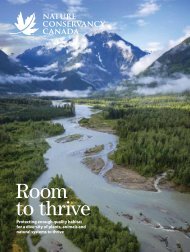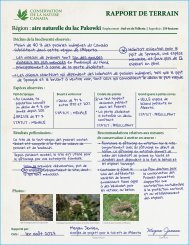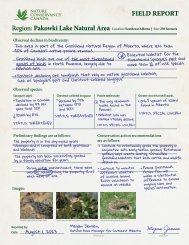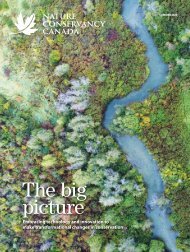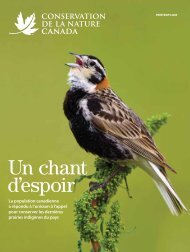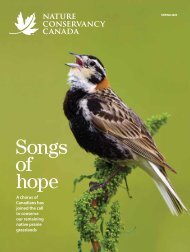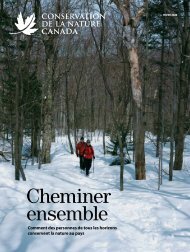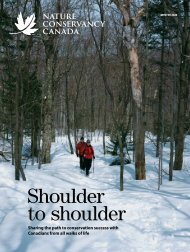NCC Magazine - Spring 2017
You also want an ePaper? Increase the reach of your titles
YUMPU automatically turns print PDFs into web optimized ePapers that Google loves.
One of the ways to safeguard these places,<br />
for the people and species that live in them, is<br />
for conservation organizations like the Nature<br />
Conservancy of Canada (<strong>NCC</strong>) to work with<br />
people on the ground at the grassroots level.<br />
Support from local champions like Danielle<br />
Robertson and her family — people who are<br />
innately tied to the land and its history — is<br />
critical in helping ensure a future for these<br />
coastal landscapes.<br />
Robertson has spent decades digging her<br />
roots deeper, getting to know the natural<br />
and human history of Port Joli. Shortly after<br />
graduating from Mount Saint Vincent University<br />
in 1989, Robertson was hired to do research<br />
for the nearby Thomas Raddall Provincial<br />
Park, which further fuelled her passion for the<br />
region. In the process, she researched the<br />
park’s Mi’kmaq clam middens (areas where<br />
First Nations would dispose of clam shells<br />
after harvesting them), evidence of a rich<br />
human history dating back thousands of years.<br />
“I got obsessed with the sites,” she says,<br />
“and I also got serious about conservation.”<br />
Robertson was proud that Port Joli and<br />
neighbouring Port L’Hebert had four parks,<br />
It’s getting more and more important that Canada be<br />
the kind of country that protects the flora and fauna,<br />
and where you can go out into the wild and explore.<br />
DIRK VAN LOON (CENTRE, ABOVE ) BECAME A LAND DONOR AFTER DANIELLE ROBERTSON (OPENING<br />
SPREAD) OPENED THE DOOR TO WORKING WITH <strong>NCC</strong>.<br />
a nature reserve and three migratory bird<br />
sanctuaries that were protected from development<br />
and managed by national and provincial<br />
government agencies — signs of the area’s<br />
natural and cultural significance. Yet she often<br />
thought how wonderful it would be for her<br />
family and next generations if even more<br />
land in the region could be protected from<br />
extensive housing developments, quarries<br />
and clear cutting.<br />
Thirteen years ago, she and Charles<br />
contacted <strong>NCC</strong>. Would the organization be<br />
interested in buying a piece of the Robertson<br />
family’s property if they donated a parcel?<br />
Shortly after opening the door, Robertson also<br />
provided contact information to <strong>NCC</strong> staff for<br />
other landowners in hopes that, down the<br />
road, <strong>NCC</strong> could help secure other lands in<br />
the area. And that’s exactly what transpired.<br />
Local champions<br />
Craig Smith, Nova Scotia program director with<br />
<strong>NCC</strong>, says that a number of factors influence<br />
whether the land conservation organization<br />
pursues work in a natural area or not.<br />
“One of them is: do you have local champions?<br />
When the Robertsons placed the call to<br />
us, it happened to coincide with <strong>NCC</strong> completing<br />
a survey of this region,” says Smith. <strong>NCC</strong>’s<br />
staff had identified southwest Nova Scotia<br />
as one of the areas that stood out as being<br />
particularly ecologically important because of<br />
its forests, diversity and rich coastal habitats.<br />
Another of the many special features of<br />
the area is that endangered mainland moose<br />
living in the Tobeatic Wilderness Area migrate<br />
to the Port Joli peninsula in the summer<br />
— perhaps for the cooler climate and for the<br />
salt content of the coastal marshes. Also, this<br />
10 SPRING <strong>2017</strong> natureconservancy.ca


